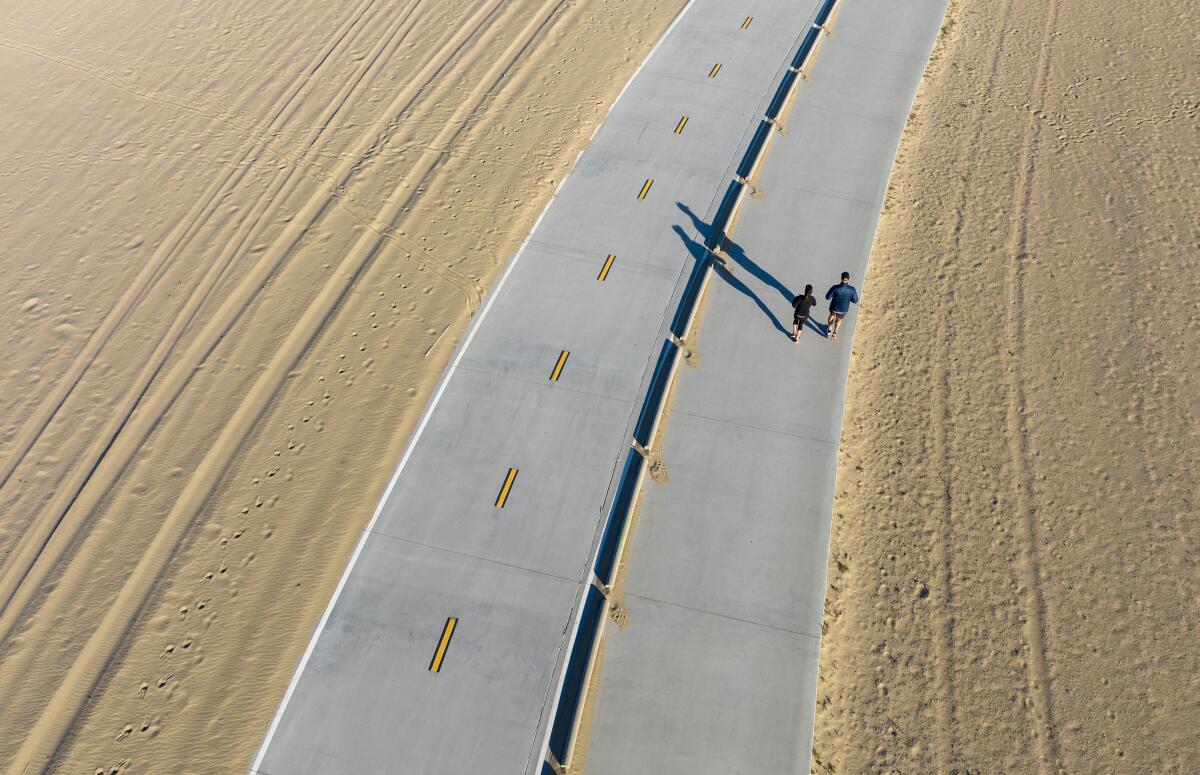Prepare for the latest blow: Rain, snow and high winds hit California

California was bracing as yet another strong, cold storm was set to bring rain, snow and high winds across the state this week, blasting Northern California as early as Monday night, forecasters say.
“Yet more rain, yet more heavy mountain snow, more travel disruptions,” Daniel Swain, UCLA climate scientist said Monday. He called it “another moderate to strong storm,” though not comparable to last week’s destructive storm, which caused multiple deaths, severe flooding, and Southern California tornadoes.
The effects of this storm will be worse “just because there’s been so many strong storms that have preceded it,” Swain said. “There could be additional issues just given how much residual damage there is from winds that have already occurred, how saturated the soils are.”
He said those living in mountainous regions, especially in the northern third of the state and in the Sierra, should be prepared for significant snowfall that would affect roadways, while high winds in the Central Valley and San Francisco Bay Area were likely to down trees and power lines — and he didn’t rule out the possibility of another twister as the storm moved down the coast later in the week.
“This is the kind of pattern that is at least hypothetically favorable for another weak spin-up or two,” Swain said, explaining how the storm could drag cold and unstable air inland as it moves south, creating thunderstorms and possibly more turbulent weather.
The brunt of the storm will hit Northern California late Monday through Wednesday, with the heaviest snowfall expected Tuesday, officials said. Snow levels are expected to drop as low as 2,000 feet in elevation, Swain said, with accumulating snowfall possible in Redding — another unusual development for this atypical storm season.
“It’s pretty late in the season to be seeing snow at the northern end of the Sacramento Valley,” Swain said.
Although many mountain residents have tired of the ongoing snowfall, Swain said this cold storm meant the snowpack wouldn’t yet melt, a growing concern because of the possibility of flooding in the Central Valley’s watersheds.
“I guess the good news is, it isn’t going to really melt any snowpack,” Swain said. “It’s going to add to the snowpack, and that’s going to have to melt later.”
Southern California can expect the “cold and vigorous storm system” to move in late Tuesday, bringing “rain, mountain snow, and breezy to gusty winds” beginning late Tuesday, according to the National Weather Service.
“This storm is weaker than previous storms,” said weather service meteorologist David Sweet, who is based in Oxnard. “It still has a pretty decent punch to it though.”
The storm is expected to bring steady rain late Tuesday into Wednesday morning in Southern California, though totals shouldn’t top 1 or 2 inches for most of the region. Snow levels, however, are expected at around 3,000 feet in elevation, meaning the 5 Freeway at the Grapevine could get snow, and higher elevations could see as much as 10 inches of snow.
Wednesday afternoon and Thursday could bring more sporadic weather, Sweet said, with scattered showers and thunderstorms possible, as well as “some locally heavy downpours, small hail and gusty winds.”
A breezy day of Santa Ana winds across Southern California raised temperatures into the 70s by Monday afternoon for just the second time this month, Sweet said.
Beginning Tuesday, he said, those warmer temperatures will feel long gone as the chilly storm from the Gulf of Alaska moves into the region.
Newsom’s decision to rescind some of the most severe restrictions comes after drenching storms eased extreme drought conditions across the state.
The National Weather Service is warning of heavy snow, travel concerns and “near whiteout conditions” through Wednesday for California’s most northern regions, with multiple feet of snow predicted for the eastern Sierra.
Where snow is not predicted, forecasters warn of significant rain Tuesday across Northern and Central California, creating the possibility of mud and rock slides, as well as stream and roadway flooding.
Once the storm moves out of the state by Thursday, Sweet said the radar looked relatively clear for at least a few days.
“As we move into the weekend with clearing skies and dry weather, temperatures will rise back into the 60s,” Sweet said.
But Swain said more wet weather probably will continue through April, which means a greater likelihood of flooding and “deep-seated landslides,” which the California Geological Survey recently warned could occur “weeks to months” after heavy rains and remain a concern into the summer.
“We remain in a fairly active weather pattern,” Swain said. “Even though the storms aren’t exceptional necessarily by winter standards, they become increasingly exceptional by spring standards if they continue to be at this level of coldness and intensity.”
More to Read
Sign up for Essential California
The most important California stories and recommendations in your inbox every morning.
You may occasionally receive promotional content from the Los Angeles Times.












